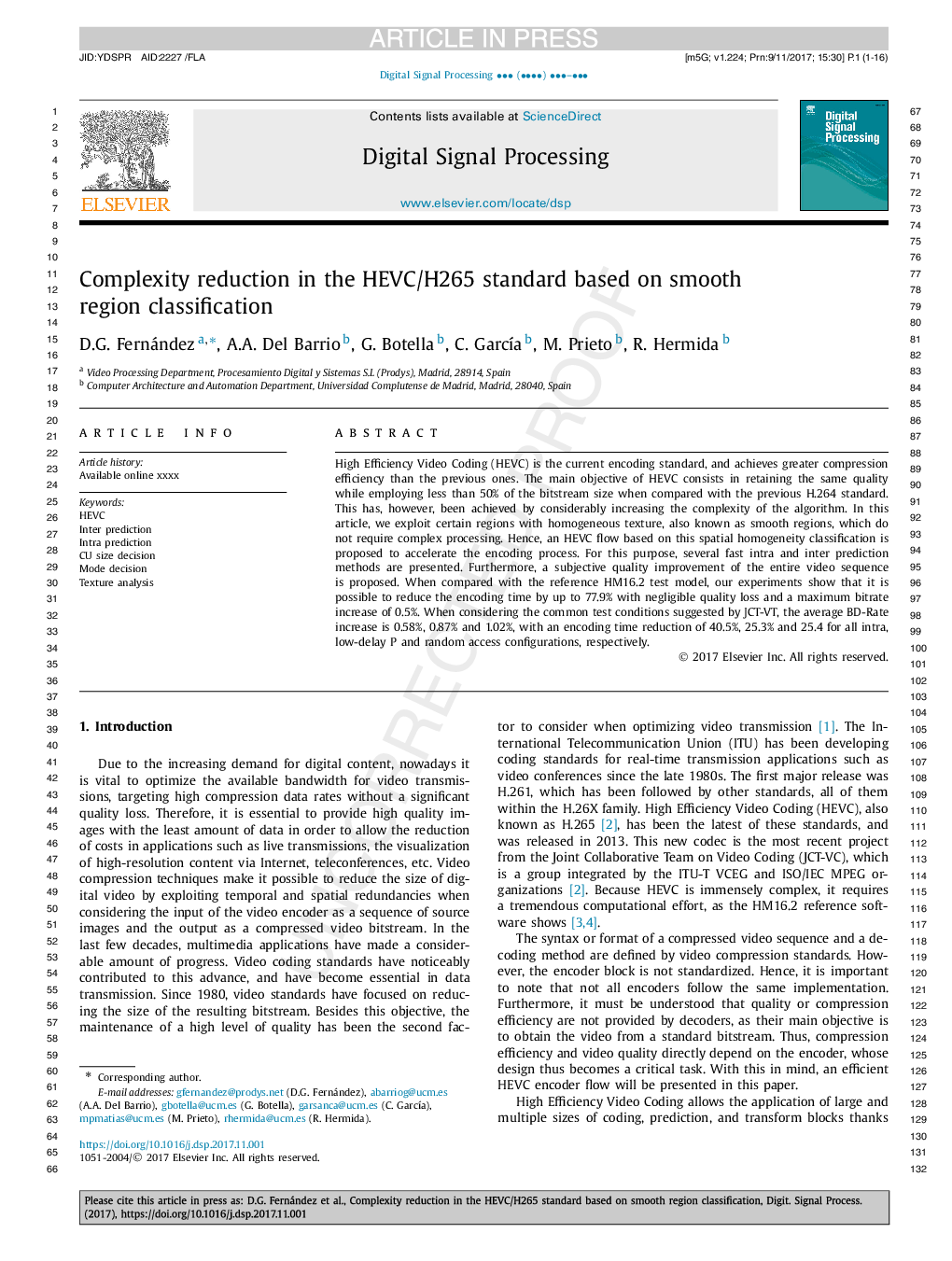| Article ID | Journal | Published Year | Pages | File Type |
|---|---|---|---|---|
| 6951862 | Digital Signal Processing | 2018 | 16 Pages |
Abstract
High Efficiency Video Coding (HEVC) is the current encoding standard, and achieves greater compression efficiency than the previous ones. The main objective of HEVC consists in retaining the same quality while employing less than 50% of the bitstream size when compared with the previous H.264 standard. This has, however, been achieved by considerably increasing the complexity of the algorithm. In this article, we exploit certain regions with homogeneous texture, also known as smooth regions, which do not require complex processing. Hence, an HEVC flow based on this spatial homogeneity classification is proposed to accelerate the encoding process. For this purpose, several fast intra and inter prediction methods are presented. Furthermore, a subjective quality improvement of the entire video sequence is proposed. When compared with the reference HM16.2 test model, our experiments show that it is possible to reduce the encoding time by up to 77.9% with negligible quality loss and a maximum bitrate increase of 0.5%. When considering the common test conditions suggested by JCT-VT, the average BD-Rate increase is 0.58%, 0.87% and 1.02%, with an encoding time reduction of 40.5%, 25.3% and 25.4 for all intra, low-delay P and random access configurations, respectively.
Related Topics
Physical Sciences and Engineering
Computer Science
Signal Processing
Authors
D.G. Fernández, A.A. Del Barrio, G. Botella, C. GarcÃa, M. Prieto, R. Hermida,
